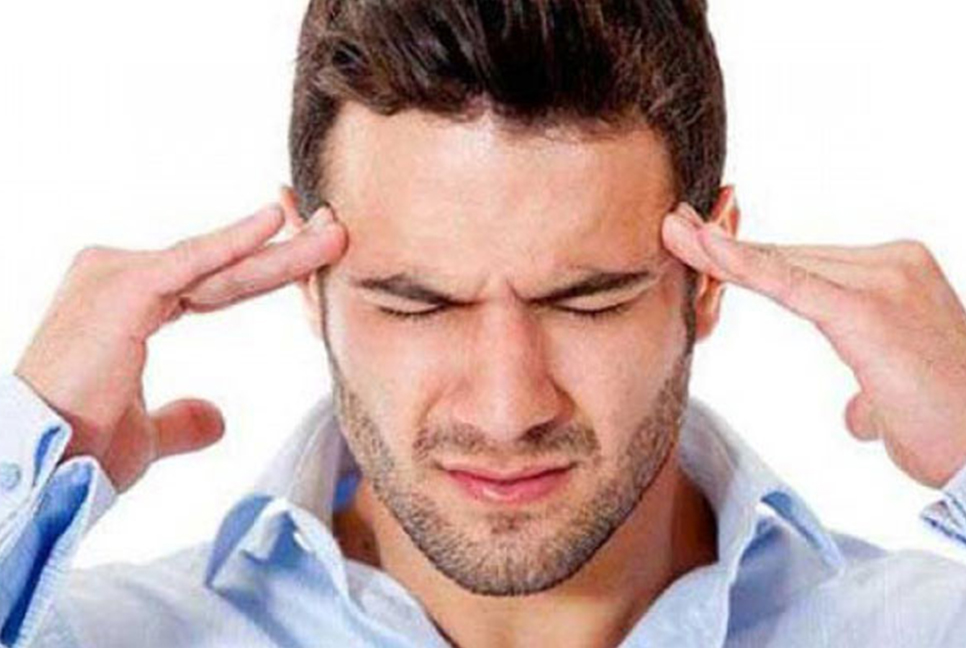Headache causes and remedies
Sufferers experience loss in family, social, financial and professional life due to recurrent headaches. Globally, about 46 percent of the total adult (18-60 years) population suffers from a headache at least once a year.
These 'headaches' are among the main factors that affect a person's performance and working hours. Headaches also have the highest rate among neurological disorders. Sufferers experience loss in family, social, financial and professional life due to recurrent headaches. Globally, about 46 percent of the total adult (18-60 years) population suffers from a headache at least once a year. About 11 percent of these headache patients have 'migraine' or hemi-cranial headache; 70% suffer from 'tension type headache' and about 3% suffer from 'chronic daily headache'. Generally, older women suffer from different types of headaches. About 20 percent of children and adolescents suffer from headaches each year.
Types of headache: Headache is mainly of two types-1. Primary headache, eg migraine, tension type headache. Cluster headaches etc. 2. Secondary headache such as sinusitis, mastoiditis, glaucoma, stroke, head injury, brain tumor etc.
Migraine: About 11 percent of adults have this type of headache. Migraines are more common in women than men. Migraine symptoms usually appear from the age of 15-16 and in most cases last until the age of 40-50.
The symptoms of migraine are as follows: 1. Pain on any side of the head. Pain on one side may cause pain on the other side. 2. Pain can last from 4 hours to 72 hours. 3. Blood vessel (artery/vein) constriction/dilatation or throbbing pain is felt. 4. The pain is very intense and during this time no work can be done. 5. Pain is aggravated by light or sound. 6. Pain may be accompanied by nausea or vomiting. 7. Before the onset of pain, the patient can understand the onset of migraine by seeing the dancing lights, crooked lines etc. (Aiv/Aura) in front of the eyes. 8. If you lie in a dark room, the intensity of the pain will decrease.
Tension type headache: 70 percent of the elderly people have this type of headache. Tension-type headaches, like migraines, begin in adolescence and are more common in women. This headache is caused by the contraction of the head muscles.
Symptoms of tension type headache are as follows
1. There is pain all over the head, 2. A pressing or band-like pain is felt, 3. The pain is not as intense as a migraine. The patient can do all activities with pain but no pain during work; But after finishing the work, the headache comes back again. 4. Headache is usually not accompanied by nausea or vomiting. 5. These headaches can last from a few hours to a few days. 6. These headaches are associated with anxiety, family or professional or emotional stress.
Cluster Headaches: Cluster headaches are relatively rare. 0.1 percent of people have this type of headache. The prevalence of this type of headache is higher in men. Approximate male : female ratio = 6:1. Cluster headaches usually appear after the age of 20.
Cluster headache symptoms are as follows: 1. Transients are repeated. 2. Very intense pain. 3. Pain around or behind the eyes. 4. Eyes become red and watery. The upper eyelid may droop. 5. The pain occurs at the same time every day or several times a day and lasts for several weeks. Then the pain went away and after a few months the pain started again.
Secondary headache: We can have headache due to various physical or head diseases. These headaches are called secondary headaches. eg (Typhoid, Viral), Meningitis (Viral, Bacterial or Tumorful Meningitis), Sinusitis, Mastoiditis, Brain Tumor, Haemorrhage or Stroke, (SAH) etc.
Diagnosis and treatment: Most of the headache sufferers in the world never consult a doctor for headache in their life, they buy different painkillers from the pharmacy themselves. Statistics show that only 50 percent of migraine sufferers in the UK and US have consulted a doctor in the past year. It has been observed that patients with secondary headache have various physical symptoms such as excessive vomiting, loss of vision, paralysis/numbness or convulsions in hands or feet or face, only go to hospital/chamber for medical advice. Now, due to many advances in medical science, it is possible to diagnose headaches very easily. Getting clear images of different parts of the head with a CT scan, MRI or PET scan has made it possible to uncover the cause of the headache.
Primary headache is treated in two stages.
For example: 1. Abortive treatment or immediate headache cure. Various painkillers can be taken for this. It must be remembered that anti-peptic ulcer drugs must be taken with these painkillers. Taking too much pain medication can also lead to headaches, called medication overuse headaches. Therefore, painkillers should not be taken unless absolutely necessary. Consult a doctor if necessary.
2. Prophylactic treatment - long-term medication to prevent frequent headaches and reduce the intensity of pain. Along with medication, some habits also need to be changed. Excessive smoking, drinking, drug consumption, drinking tea and coffee, irregular and excessive sleeping pills, sunny or excessively hot weather, excessive physical, mental exertion, hunger, any kind of mental stress etc. are causes of headache. So solving these habits will reduce the headache to a great extent. Along with positive lifestyle practices, mental relaxation helps reduce the incidence of pain.
Secondary Headache: Treating a secondary headache usually involves treating the underlying cause of the headache. A neurologist diagnoses the disease through tests, according to which treatment is curative.
Source: The Daily Bangladesh Protidin/newspaper.